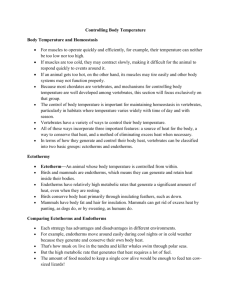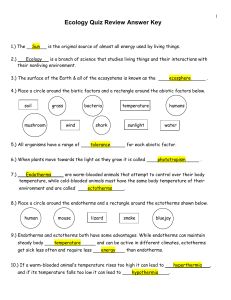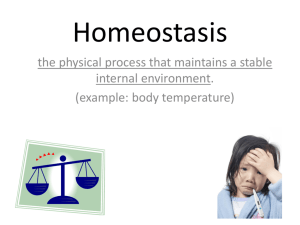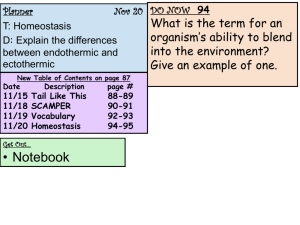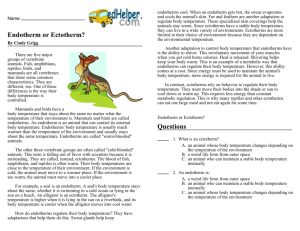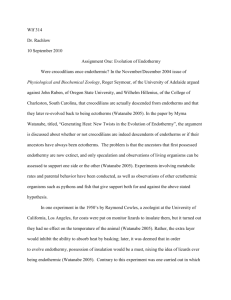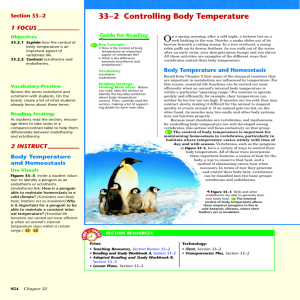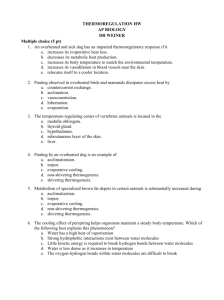DinosaurMetabolism02
advertisement
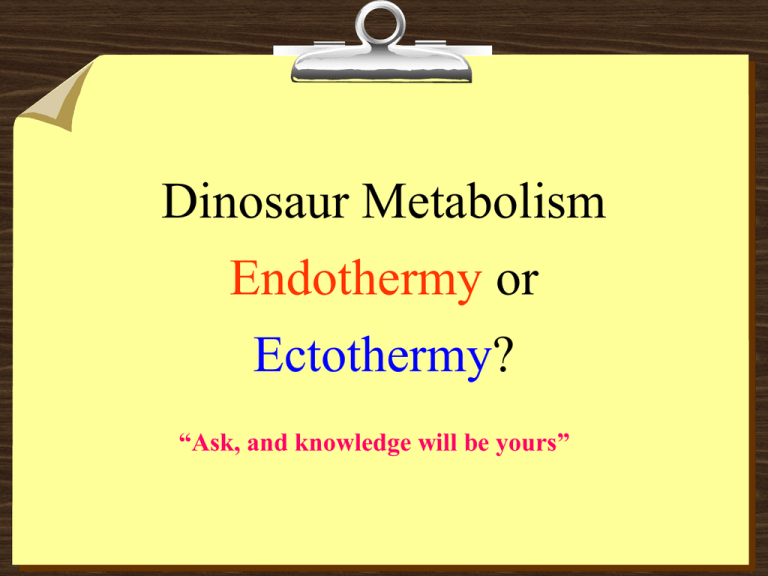
Dinosaur Metabolism Endothermy or Ectothermy? “Ask, and knowledge will be yours” I. Temperature Control in Vertebrates A. Three general features of temperature control systems: too hot or too cold 1. a source for body heat 2. a way to conserve heat 3. a way to get rid of excess heat and DNA & proteins do not function correctly B. Importance of temperature control systems: 1. allows the body to maintain an internal temperature suitable to keeping the organism alive 2. Muscles (for movement) only function at proper temperature. II. Two Models for Temperature Control A. Ectothermy (“cold-blooded”) 1. an internal body temperature (only slightly lower than “warm-blooded” animals) that varies with external (environmental) conditions due to a slow metabolism 2. example: reptiles B. Endothermy (“warm-blooded”) 1. a relatively high, constant internal body temperature that is regulated internally to a fast metabolism 2. example: mammals Metabolism: the rate that energy is obtained from food. III. The Debate: Endothermy vs. Ectothermy Were dinosaurs ectothermic or endothermic? Here are some of the arguments: A. There is evidence that suggests that dinosaurs had physical characteristics that are similar to those of endotherms: 1. large rib cage large heart (needed to circulate oxygen to fast-working muscles) 2. fast growth rate required to grow so big 3. could live in cold regions (tundra) requires high internal body temperature III. The Debate (continued) 4. trackway speeds modern endotherms 5. high predator to prey ratio endotherms require more food than ectotherms 6. hip structure supports upright posture allows for higher levels of activity 7. holes in the skull, feathers (maybe) and other anatomy like birds (endotherms) may be to get rid of excess heat, insulate needed heat 8. Dinosaurs seem to exhibit parental care usually only endotherms can afford this energy expenditure III. The Debate (continued) B. There is evidence that suggests that dinosaurs had physical characteristics that are similar to those of ectotherms: 1. Mass homeothermy/ Gigantothermy: Large objects retain heat longer than small objects of similar composition theory states that, although large dinosaurs were ectothermic, they were able to maintain relatively high, constant, internal temperatures because of their size. 2. Lacking holes in nasal passages (turbinates) like reptiles (ectotherms) III. The Debate (continued) 3. Predator/prey ratio Athough fossil record supports endothermy, fossilization is a chance process and record is incomplete. 4. Lung structure may not have allowed for sufficient oxygen intake Ectotherms need less oxygen 5. Bone formation Similar to active present-day reptiles (ectotherms) 6. Large dinosaurs may not have been able to consume enough food to support endothermy ectotherms require less food
